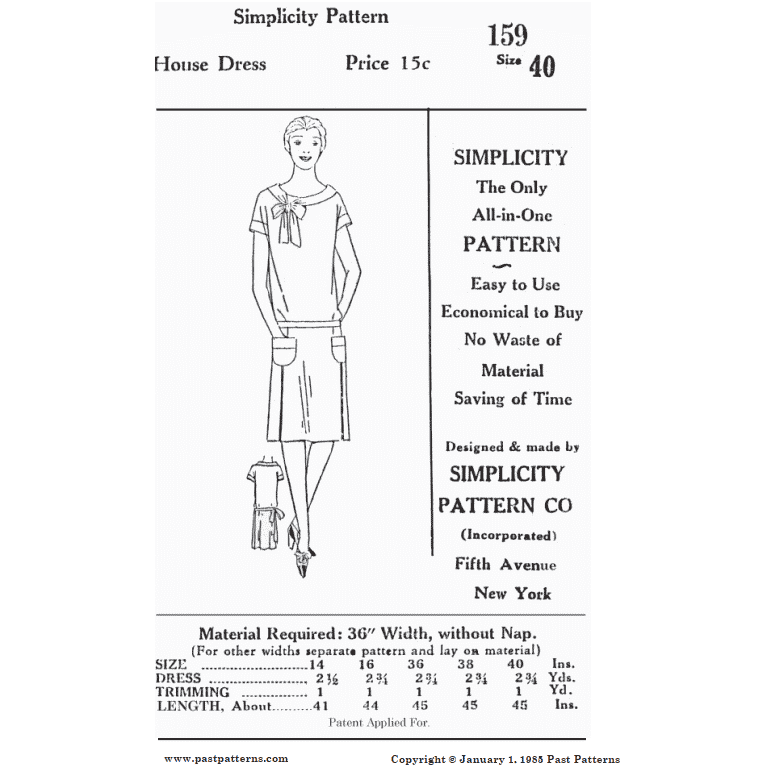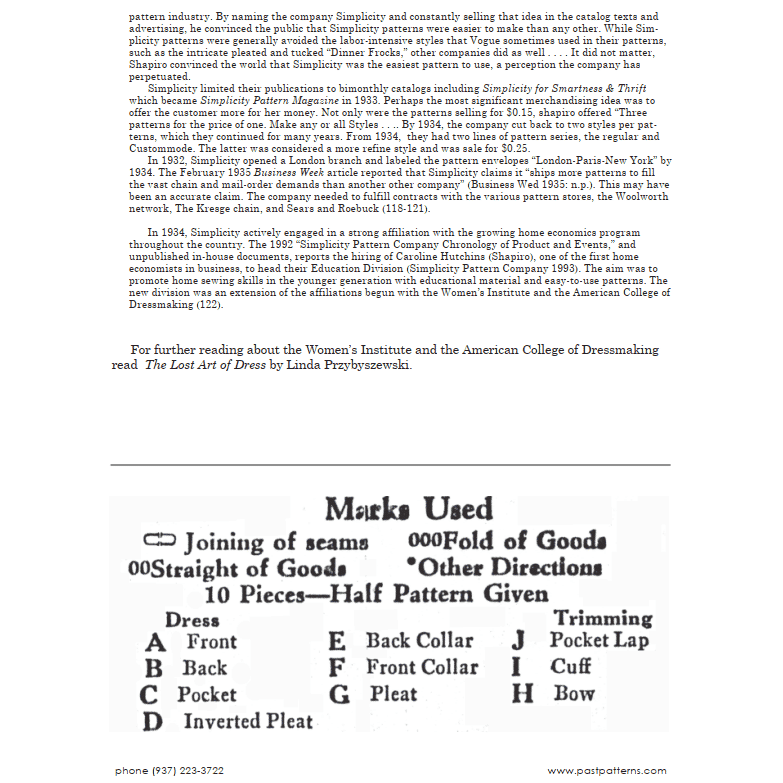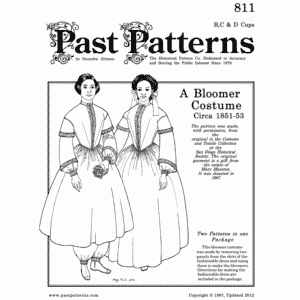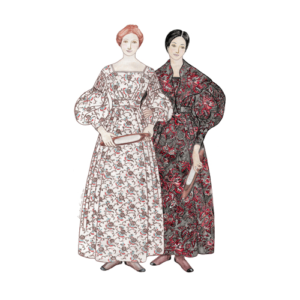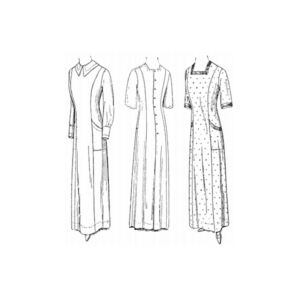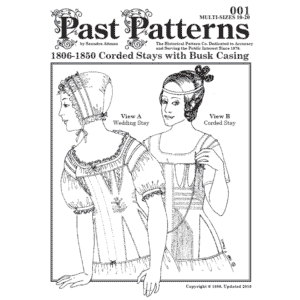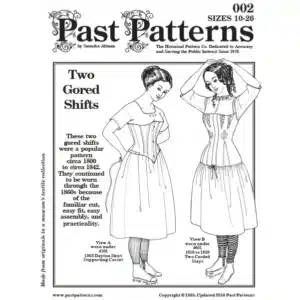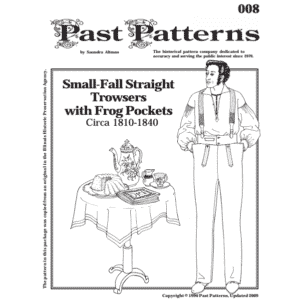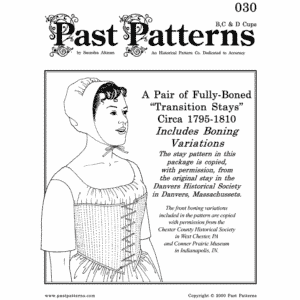Late 1920s House Dress Sewing Pattern | Past Patterns 0159
$18.00
Experience historical 1920s fashion with this documented house dress pattern featuring kimono sleeves and decorative collar. Size 40 Bust. Complete instructions.
999 in stock
Get Free Shipping
On all US Orders over $50!
$18.00
Experience historical 1920s fashion with this documented house dress pattern featuring kimono sleeves and decorative collar. Size 40 Bust. Complete instructions.
999 in stock
Get Free Shipping
On all US Orders over $50!
All of our patterns tell a story.
Why Choose This Pattern?
Meticulously Researched Late 1920s House Dress Sewing Pattern
This Late 1920s House Dress sewing pattern is a carefully documented reproduction from The Simplicity Pattern Company, originally known as "The Only All-in-One PATTERN." This exceptional pattern captures the practical elegance of 1920s domestic fashion with precision and historical accuracy.
History of the Late 1920s House Dress Pattern
The late 1920s represented a transformative period in women's fashion. During this era, women increasingly participated in the workforce while maintaining household responsibilities, creating demand for garments that balanced style and practicality. The Late 1920s House Dress sewing pattern reflects this cultural shift, providing women with a comfortable yet fashionable garment for daily domestic activities.
Simplicity Pattern Company, founded in December 1927 by Joseph M. Shapiro and his son James, revolutionized home sewing by making affordable patterns accessible to the average American woman. Their goal was to provide stylish $0.15 patterns during a time when economic constraints were becoming increasingly important—particularly prescient given the market crash of 1929. As noted in the Smithsonian's collection on sewing patterns, companies like Simplicity democratized fashion during this pivotal period.
The House Dress represented everyday practicality in women's clothing—a garment designed for comfort and utility while maintaining the distinctive silhouette and aesthetic of the era. These practical dresses featured elements like the kimono sleeve, decorative collar, and convenient pockets seen in this Late 1920s House Dress sewing pattern. According to Victoria and Albert Museum's fashion collection, such practical garments were essential to women's daily lives while still reflecting broader fashion trends.
Features of Our Late 1920s House Dress Sewing Pattern
This pattern delivers the distinctive characteristics of late 1920s fashion with attention to historical detail:
- Designed for a 40" (102cm) Bust measurement
- Simple silhouette with characteristic 1920s drop Waist
- Practical kimono sleeves for ease of movement
- Decorative collar with bow accent
- Convenient pocket placement for household work
- 1/2" seam allowance throughout for proper fit
The Late 1920s House Dress sewing pattern represents a transitional period in fashion history, when the freedom of the flapper era began to evolve toward the more structured silhouettes of the 1930s. This house dress maintains the comfortable, loose fit that made 1920s clothing revolutionary while incorporating practical elements necessary for a working woman's wardrobe.
Historically Accurate Materials and Instructions
Our founder, Saundra Altman, recommended specific period-appropriate fabrics for this Late 1920s House Dress sewing pattern including gingham and percale in historically accurate colors: blue, grey, tan, lavender, blue-plaid, pink-plaid, pink-check, blue-check or black-and-white-check. These fabric choices align with The Metropolitan Museum of Art's documentation of everyday fashion textiles from this period.
Material requirements for the Late 1920s House Dress are:
- Dress: 2-3/4 yards of 36" wide fabric
- Trim: 1 yard of 36" wide fabric
The pattern instructions follow original 1920s sewing techniques, providing an authentic experience of garment construction from this era. These methods differ from modern approaches, offering valuable insights into historical dressmaking practices for costume historians and vintage enthusiasts alike.
Complete Late 1920s House Dress Sewing Pattern Package
Your Late 1920s House Dress pattern package includes:
- Reproduction of the original 1920s pattern front cover
- Two pages of detailed historical information about late 1920s fashion
- Complete written construction instructions following original techniques
- Two 36"x53" sheets of hand-drawn patterns emulating the original Simplicity format
- All ten pattern pieces needed to complete the authentic Late 1920s House Dress
Each Late 1920s House Dress sewing pattern is printed on high-quality 20 lb. white paper and packaged in durable, reusable plastic for protection. We prioritize reasonable shipping rates for both domestic and international orders, with combined shipping automatically calculated for multi-item purchases.
Historical Significance of the Late 1920s House Dress
The house dress of the late 1920s reflects significant social changes of the period. As discussed in the Library of Congress women's history collection, women's clothing during this time began to emphaSize functionality alongside fashion, representing women's expanding roles in society. The Late 1920s House Dress sewing pattern captures this important historical moment when practicality became an essential aspect of women's fashion.
Studies of 1920s clothing construction, such as those documented in the Fashion Institute of Technology Museum's archives, demonstrate how these seemingly simple garments incorporated innovative design elements that allowed for ease of movement while maintaining a fashionable silhouette.
This carefully researched Late 1920s House Dress sewing pattern allows modern seamstresses to experience these historical techniques firsthand, creating a garment that connects us to the daily lives of women nearly a century ago.
The Late 1920s House Dress pattern offers a wonderful opportunity to experience the practical fashion of the flapper era through historically researched techniques and design. Whether you're a costume historian, vintage fashion enthusiast, or looking to create a period-correct garment, this pattern provides everything needed to recreate this functional yet stylish late 1920s design.
Prefer a digital download? Get this pattern in our downloadable format here.
Original Content by Past Patterns 1979-2025. All rights reserved
Additional information
| Weight | 9 oz |
|---|---|
| Dimensions | 13 × 10 × 2 in |
Sizing Information

(Metric size sheet opens as a PDF in a new browser tab)
Preferred Vendors
Past Patterns works with vendors from all over the world to help us replicate the amazing articles of clothing. Now you can too!
Visit our preferred vendors page to order directly from some of our top recommended suppliers.
FAQ's
(Frequently asked questions)
Why are both Trowsers and Trousers listed on site?
Over the last 200 years, much like the human body, our style of language has changed. For vintage patterns, we attempt to use the language of the day where possible.
Can you grade (edit) a Vintage Revival pattern for my size?
please contact us with the specific pattern number and the specifications you require. We have staff available for this for an additional fee.
What sizes do Past Patterns patterns come in?
Our patterns, with some exceptions, are manufactured in sizes 8 through 26 for women and sizes 34 through 54 for men. Most patterns are multi-sized. For a complete listing of measurements in inches see the size chart.
Do you have vintage patterns (manufactured prior to 1950) that you want to sell?
we are always on the lookout for original, American designed, vintage patterns especially for categories outside of current items. We are interested if you have 1 pattern or 1000 patterns. Give us a call to discuss.
Why is my pattern size different from my off the rack dress size?
We use the U. S. Board of Standard Measurements to size our patterns. The ready made clothing manufacturers have their own set of sizes developed from their own statistics. For a complete listing of measurements in inches see the size chart.
How are the patterns packaged?
We package our patterns in two forms: Bond Paper and Tissue. Except for the Tissue patterns, each is slipped into a reusable plastic sleeve. Many contain documentation in the form of Historical Notes or the printer ie., Butterick. Because the patterns are printed in house to order, they can take from three to seven days. Tissue patterns, which are printed out of house, are available to ship immediately.
What does a Corset Kit contain in addition to the Corset pattern?
In addition to the pattern, the kits contain everything you need to make the corset except the thread. The kits contain, according to their type, fabric and lining, stays, clasp or busk board, back lacing, tape for finishing the edges, trim lace, ribbon, leather, tin stock, waist tape, punch and setter, eyelets, marking pencils, cording, reed and a loop turner.
Need a pattern in your language?
we can translate our instructions into just about any language
Have an old and incomplete Past Patterns item. What can I do?
The answer depends on if the pattern is still in production or not. If it is, please mail us the old pattern and we will ship you a copy of the latest pattern for a minimal fee along with normal shipping charges. If the item is no longer in production, we would need to know exactly what you have to determine the best course of action to help you.
What is the difference between a Past Patterns original pattern and a Vintage Revival pattern?
The Past Patterns originals were designed in house and based upon the research, disassembly and time of Saundra Ros Altman. These designs come from finds all over the United States reaching from San Diego, California to the Smithsonian Museum in Washington, DC. She created the initial patterns, the sizing charts and the instruction content. Many of the these patterns are multi-sized or are available in various sizes. For the most part, these designs are done taking into account the modern human body's shape, height and weight. The Vintage Revival patterns are traces or copies of an old, mass produced pattern; the first mass produced patterns came out in the 1850s. For the most part, you get exactly what came in the original package; in some cases, Saundra has appended historical notes to the instructions. The Vintage Revivals patterns, being copies of the originals, generally only come in one size and are based upon the size and shape of the human body from the era the pattern came from.
What software do you use to create patterns?
We utilize PW Studio for our designs. Isabelle Lott, a contributor over the years to Past Patterns, is the owner of the company and will be happy to answer an software related questions you have. Her software is available for licensing.
What measurements do I need to know to order a Corset Kit?
The bust and back length. The back length is measured from the prominent bone at the base of the neck to the natural waistline.
Where can I see the appropriate clothing fabrics for the 18th and 19th centuries?
You can see 1740 through 1940 fabrics in a book titled "Textile Designs" by Susan Meller and Joost Elffers. The subtitle states, "Two Hundred Years of European and American Patterns for Printed Fabric by Motif, Style, Color, Layout and Period and 1,823 Illustration in Color." What they don't say is that 90% of the swatches pictured are life size. The ISBN is 0-8109-3853-7. A second book is Wearable Prints, 1740-1860, History, Materials, and Mechanics by Susan W. Greene. The ISBN is 978-1-60635-124-6. Great books! Order it from your local library that has interlibrary loan capability if you cannot afford the price. There are now many sources for appropriate fabric through the Internet.
Where can I find antique patterns to purchase?
On the Internet try: "Patterns from the Past."
Need a pattern tomorrow?
we do offer expedited domestic shipping for extra fees. We can also expeditie international shipments but delivery dates overseas cannot be promised.
Becoming a Wholesalers of our patterns
We offer Wholesalers significant discounts that will allow both your and our businesses to flourish.
Why don't we sell PDFs of our patterns - First due to piracy. We have spent over 40 years creating and tracing these patterns along with researching them. We print and ship all of our patterns ourselves. If we started sending out PDFs, in no time, copies of our Intellectual Property would be all over the internet and we would be out of business. Second, some of our patterns are constantly being updated. We want our clients to get the BEST POSSIBLE version of our products.

